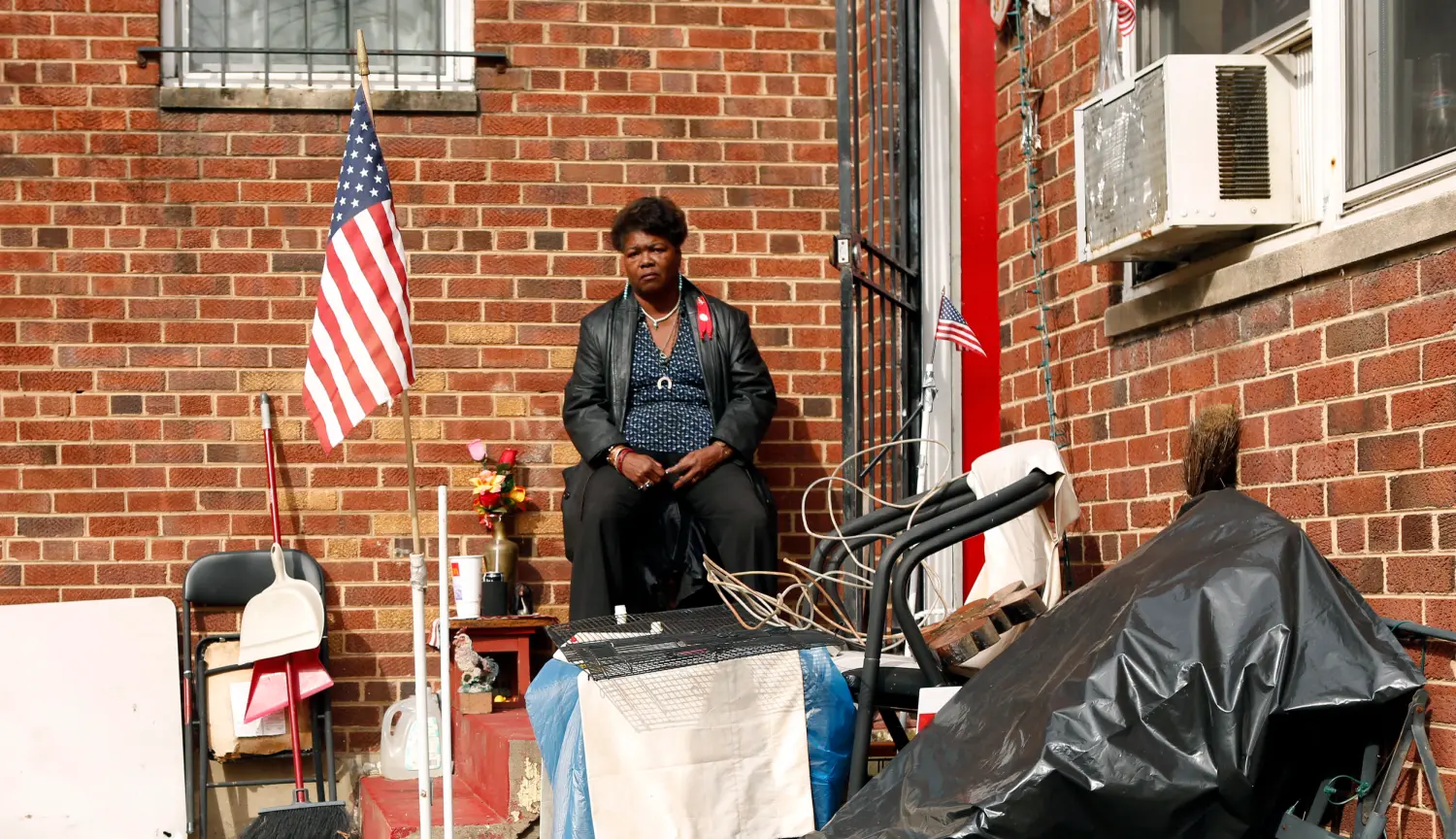By virtually all accounts, poverty in America is too high, and the opportunities for low-income children to succeed in life remain too low. The Democratic Party has traditionally led the fight for less poverty and more opportunity in America. I accordingly take on a simple question here: What policies should the 2016 Democratic nominee for president propose to address these problems?
As an economist who studies poverty and opportunity, and also as a former Democratic political appointee,1 my pragmatic view is that three key constraints should be taken into account if we are truly serious about making things happen: We need policies that are (1) based on the best available evidence on which factors limit economic success among the poor and which policies are most cost-effective in mitigating those factors; (2) consistent with the values and history of the Democratic party, while adapting to current social and economic circumstances; and (3) consistent with the broad values of Americans, so that they can generate political support and, ultimately, some bipartisan appeal.
The factors that limit success among the poor are pretty clear. The most important are their low education levels and weak skills; the low pay for unskilled work in the US, the correspondingly reduced incentive for many to remain in the job market, and the difficulty in finding or keeping jobs; and various “group-specific” barriers, such as growing up in a very poor family or neighborhood, having a criminal record, being a non-custodial parent, or having a disability.
The foregoing diagnosis leads directly to the prescription. What we need—very simply—are policies that will:
- Raise education and skills among poor children, youth, and adults.
- Make work pay” for the unskilled, and make more jobs available to them when needed.
- Address the specific problems of such groups as ex-offenders, non-custodial parents, children in very poor families or neighborhoods, and people with disabilities.
The good news here is that decades of research suggest what works and what doesn’t when trying to accomplish the above goals. It goes without saying that our policy proposals should reflect that accumulated body of knowledge. As Democrats, we don’t expect the private sector or private charity to do all the necessary work, much as we might wish that to be the case. Instead, there is a serious policy role for government to play, a role that might require somewhat greater public resources than has historically been dedicated to the task.
At the same time, American voters—and especially our Republican friends and colleagues—will correctly insist that our programs must be cost-effective and fiscally sound so that they do not contribute to rising federal deficits. Those that do not work should be eliminated. And those that we keep or put in place should not discourage work or stable family formation, as both are critical for raising incomes and promoting opportunity for poor children.
Raising Education and Skills among the Poor
These constraints can be met. Over the long term, the most important policy for lowering poverty and raising opportunity is to improve the education and skills of low-income children, youth, and adults. If anything, the gaps in schooling between poor children and others are rising.2 In an economy that values and rewards education more than ever before, these gaps must be closed.
But two additional points need to be addressed by any skill-growing policy. First, many poor youth, as well as adults, now enroll in college, especially community or for-profit colleges. Many have Pell grants to pay all or most of their tuition. The more fundamental problem is that their completion rates are very low, reflecting weaker academic preparation in the K–12 years and other challenges. Second, even when they do successfully attain credentials like associate (AA) degrees, too few are in fields that the labor market rewards. The challenge, then, is to ramp up the amount of training for the poor in strong “career pathways” and in high-demand sectors, like health care and information technology, as well as their ability to complete such work.
Given this range of problems, an appropriate set of policies is needed to expand access to high-quality training, ensure retention, and ensure that training is targeted to high-demand sectors. Such policies would include:
- Expanding the availability of high-quality pre-K programs for low-income children.
- Increasing the number of effective teachers in strong science/technology/math (STEM) programs in poor school districts, and enabling more low-income children to choose and attend schools that have them.
- In high school, making sure that more high-quality career and technical education (CTE) and work-based learning is available.
- Rewarding public colleges with more funding if they raise completion rates and earnings among poor students.
- Making it easier for poor students to use their Pell grants in short-term or non-credit programs that clearly have labor market value, or for apprenticeships and other forms of work-based learning.
This is not a laundry list. It is a targeted set of programs that address the key problems and exploit what we know about what works and what doesn’t. There are, it should be stressed, notable omissions here: I am somewhat less interested, for example, in universal pre-K and am more interested in assuring access to high-quality pre-K programs for all low-income children;3 spending very scarce public resources to pay for pre-K for middle- and upper-income children makes little sense to me. Also, poor children can have access to good math and science instruction in a variety of ways, through traditional public schools, as well as in the best charter programs.
High-quality CTE, unlike old-fashioned vocational education, does not track students away from college and lock them into dead-end jobs. The best CTE programs—like Career Academies or apprenticeships—give students strong academic skills, plus more specific occupational training and work-based learning, providing them with both postsecondary education and career options after high school.4
As for higher education, we must help the public institutions that most poor students attend—especially community colleges—by providing more resources and clearer incentives to spend those resources cost-effectively. Basing additional public subsidies to these institutions on the academic and job market outcomes of their poor students is warranted.5 And making it easier for them to use their Pell grants in certificate programs that have labor market rewards would help as well.
I do not think that free community college should be an immediate top priority. Again, subsidizing college attendance for middle and upper-income students in a world of very scarce resources makes less sense than targeting these resources to the practices and services that will best serve low-income students successfully and prepare them for the future.
Making Work Pay and Jobs More Available
When people with low skills work, their pay in the United States is usually very low. This not only means they struggle to support their families, but it also discourages many workers who expected to have higher wages and benefits, which then leads some to drop out of the workforce. Indeed, falling labor force participation, especially among those well below retirement age, threatens the productive capacity of the U.S. economy, as well as the families and communities in which these workers reside.
We have two prominent ways of “making work pay”: raising the minimum wage and expanding the Earned Income Tax Credit (EITC). Regarding the minimum wage, we should certainly raise it, but only to levels that that do not greatly threaten job loss among the young and less-educated. In my view, a moderate increase—perhaps to $10 or so—would meet this objective.6
On the EITC, one group of poor adults now benefits very little from it: childless adults, especially non-custodial parents. A childless adult EITC (in the amount of $1,500–$2,000) should raise their incentives to accept and keep low-wage jobs, as well as their ability to support families.7
But some poor youth or adults have great difficulty finding or keeping employment. This is especially so when recessions occur, if they live in depressed regions of the country, or if their work-readiness is very limited. Making sure that they have access to employment is critical. But public service jobs for the poor are very expensive and often have little long-term impact on their earnings; and tax credits to employers for hiring the poor also have little positive impact over time.
Instead, the government should build on its relatively successful experience during the Great Recession of subsidizing jobs for poor and unemployed workers through its Emergency TANF program, in which about 250,000 such jobs were created quickly in the private and public sectors.8 These subsidized jobs should be made available even in good times in depressed regions, while even more should be created when the economy weakens.
Helping Specific Groups
The final task is helping particular groups that face more specific problems. Besides raising skills, making work pay, and ensuring job availability, particular groups of low-income children and adults face specific problems and barriers that need specific solutions. Several are pervasive enough or critical enough that they clearly merit attention in any effort to fight poverty and improve opportunity.
For instance, low-income men, especially among African Americans, frequently have criminal records, as well as child support orders for noncustodial children on which they are behind in payment (or in “arrears”). The criminal records strongly deter employers from hiring them, and the high taxes on the earnings of those in arrears often deter these men from formally taking and keeping low-wage jobs.9
A range of policies and programs are needed to deal with these problems. Some focus on prevention, including alternatives to criminalizing drug use or jailing minor parole violators and policies to encourage responsible use of contraception to prevent unwed fatherhood. Others encourage states to reduce legal barriers to employment for offenders and offer arrears management. Expanding public funding for effective “transitional jobs” and fatherhood programs should also be in the mix.
People with disabilities present a different problem. Currently, the federal disability insurance (DI) program encourages those who meet its eligibility requirements to never work again, thus limiting opportunity for these individuals and their families. A range of reforms that encourage and reward workers and employers for maintaining employment, rather than entering permanent nonemployment, have been proposed, and these deserve to be carefully evaluated.10 Even programs like the Supplemental Nutrition Assistance Program (SNAP, formerly known as the Food Stamps program), which does not appear to discourage much work per se, might do more to help recipients regain employment. But all of this needs to be done without punishing those who truly cannot work and need income support.
Children growing up in families with very low incomes also need more help, especially in the summer months (when they lose access to school breakfasts and lunch) and in periods when their parents and guardians lose employment. Strengthening income support and basic services for children in these circumstances is essential.
Finally, children growing up in impoverished neighborhoods also need help. Recent research by Raj Chetty and Nathaniel Hendren proves beyond a doubt that children who reside in poor neighborhoods have more limited opportunity for upward mobility than those growing up elsewhere.11 A range of policies to help these children have been proposed and tested over time. Some involve helping them and their families move to less-poor neighborhoods; others seek to improve their access to better schools and jobs in their regions; and still others involve strengthening the communities in which they live and the services provided there.12 All of these approaches merit further experimentation and evaluation, before being implemented on a broader scale.
Conclusion
Poverty rates in America remain much too high, and opportunities for upward mobility among those raised in poverty remain much too low. The Democratic nominee for President in 2016 must propose policies that balance compassion with cost-effectiveness and that can gain electoral support and ultimately bipartisan cooperation. An agenda that sensibly combines improving skills, making work pay, ensuring job availability, and addressing group-specific barriers at modest budgetary cost can meet these requirements.
To some extent, and in their own ways, the two primary candidates for the Democratic presidential nomination have embraced elements of this agenda. Both Hillary Clinton and Bernie Sanders have called for universal, high-quality pre-K, as well as hefty increases in the federal minimum wage (Clinton to $12 an hour, and Sanders to $15). In addition, Clinton has emphasized the need to train and recruit more high-quality teachers in K–12 education; to expand apprenticeships; to allow the use of Pell grants for a wider range of credentials with labor market value; to provide more resources to community colleges, as well as insist on accountability in delivering those resources; and to reduce incarceration and help ex-offenders reenter society. Among other ideas, Sanders has called for a youth employment program that creates 1 million new jobs for them.
Is this enough? No. I look forward to the time when the Democratic nominee proposes and embraces other elements of the agenda I’ve described above more fully.
References
[1] I served as Chief Economist of the U.S. Department of Labor in the Clinton Administration. I have also recently served as an advisor to the Hillary Clinton presidential campaign on workforce development policies, but the views expressed below are strictly my own.
[2] AEI/Brookings Working Group on Poverty and Opportunity. 2015. Opportunity, Responsibility and Security: A Consensus Plan for Reducing Poverty and Restoring the American Dream. Washington, D.C.: American Enterprise Institute for Public Policy Research and Brookings Institution.
[3] Cascio, Elizabeth, and Diane Whitmore Schanzenbach. 2014. “Expanding Preschool Access for Disadvantaged Children.” In M. Kearney and B. Harris, eds., Policies to Address Poverty in America. Washington, D.C.: The Hamilton Project, Brookings Institution.
[4] Holzer, Harry J., Dane Linn, and Wanda Monthey. 2013. The Promise of High-Quality Career and Technical Education. New York: The College Board.
[5] Holzer, Harry J. 2014. “Improving Employment Outcomes for Disadvantaged Students.” In M. Kearney and B. Harris, eds., Policies to Address Poverty in America. Washington, D.C.: The Hamilton Project, Brookings Institution.
[6] Congressional Budget Office (CBO). 2014. The Effects of a Minimum Wage Increase on Employment and Family Income. Washington, D.C.: CBO.
[7] MDRC. 2015. Paycheck Plus: Making Work Pay for Low-Income Single Adults. New York: MDRC.
[8] Roder, Anne, and Mark Elliott. 2013. Stimulating Opportunity: The Effects of the ARRA Emergency Jobs Program. New York: Economic Mobility Corporation, Inc.
[9] Edelman, Peter, Harry J. Holzer, and Paul Offner. 2006. Reconnecting Disadvantaged Young Men. Washington, D.C.: Urban Institute Press.
[10] Liebman, Jeffrey, and Jack Smalligan. 2012. An Evidence-Based Path to Disability Insurance Reform. Washington, D.C.: The Hamilton Project, Brookings Institution.
[11] Chetty, Raj, and Nathaniel Hendren. 2015. The Impact of Neighborhoods on Intergenerational Mobility. Cambridge, MA: National Bureau of Economic Research.
[12] Reeves, Richard, and Allegra Pocinki. 2015. Space, Place, Race: Six Policies to Improve Social Mobility. Washington, D.C.: Brookings Institution.




